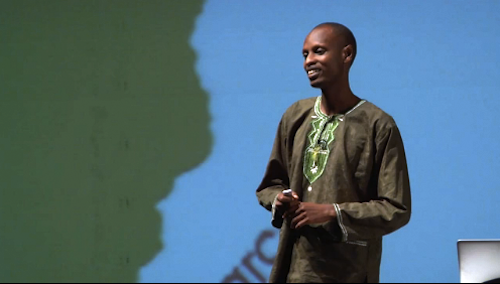People love to band about the term “innovation” — there’s a whole issue right now because of the recent New Yorker article on “disruptive innovation” — but most people actually use it the wrong way. (It’s similar to how many people think they’re discussing “strategy” but they’re really just planning things out.) Innovation is coming up with a different way of looking at a problem that exists, and solving it in a way that others hadn’t thought to do so. Yes, that’s a simplistic definition and it involves more than that … but that’s the basic situation. Problem exists, new and different solution is found, yay. Consider Uganda, for example. It has one of the highest fertility rates in the world — the population has nearly doubled in 20 years. But at the same time, companies around the world are destroying its forests (75 percent reduction in the past several decades). This creates a situation where young girls often have to skip school and walk miles to find firewood, as that’s the primary agent for cooking. Plus, charcoal is insanely expensive in sub-Saharan Africa. See, this here is a legitimate problem. Cue Sanga Moses with an innovative solution:
The kilns are used to carbonize the farm waste. Things like coffee husks, sugar cane waste, rice waste. You put them in the kiln, start a fire and they get carbonized. You get a powder called char. It is sold to us [by farmers who run the kilns] and then we compress that into fuel briquettes, package them and take them to the market. Slightly over 114,000 people have used them since 2011.
114K in three years in a country of 35 million people would get you groans on Shark Tank, but remember — there’s no marketing here. They just take food waste, put it in a kiln, get this powder, turn it into briquettes, and sell it to those who want it. The rate of adoption has been pretty quick. And there’s this:
We have a network of 460 women retailers who earn about $152 a month. That is a lower middle class income and is more than what the government pays a primary school teacher.
Users can save about $200 a year by using our fuel. Then we have farmers who supply us with the char and on average earn about $30 a month.
Girls don’t have to skip school to find wood. Parents, because they have some disposable income either through savings [on fuel] or through sales as retailers or farmers, can buy books for their children, can pay school fees, [and can buy] uniforms, sanitary pads.
Again, innovation. The problem involved fuel sources, people foregoing their education to gather wood, and keeping costs down in a poor area. We’re not talking about something that everyone in the country is using, no — but we are talking about an idea to solve a problem that gained steam and has now good rates of adoption. That, right there, is what we should discuss when we toss around the word innovation.

thanks for sharing such great article. i appreciate the post. keep posting more. lista de email lista de email lista de email lista de email lista de email